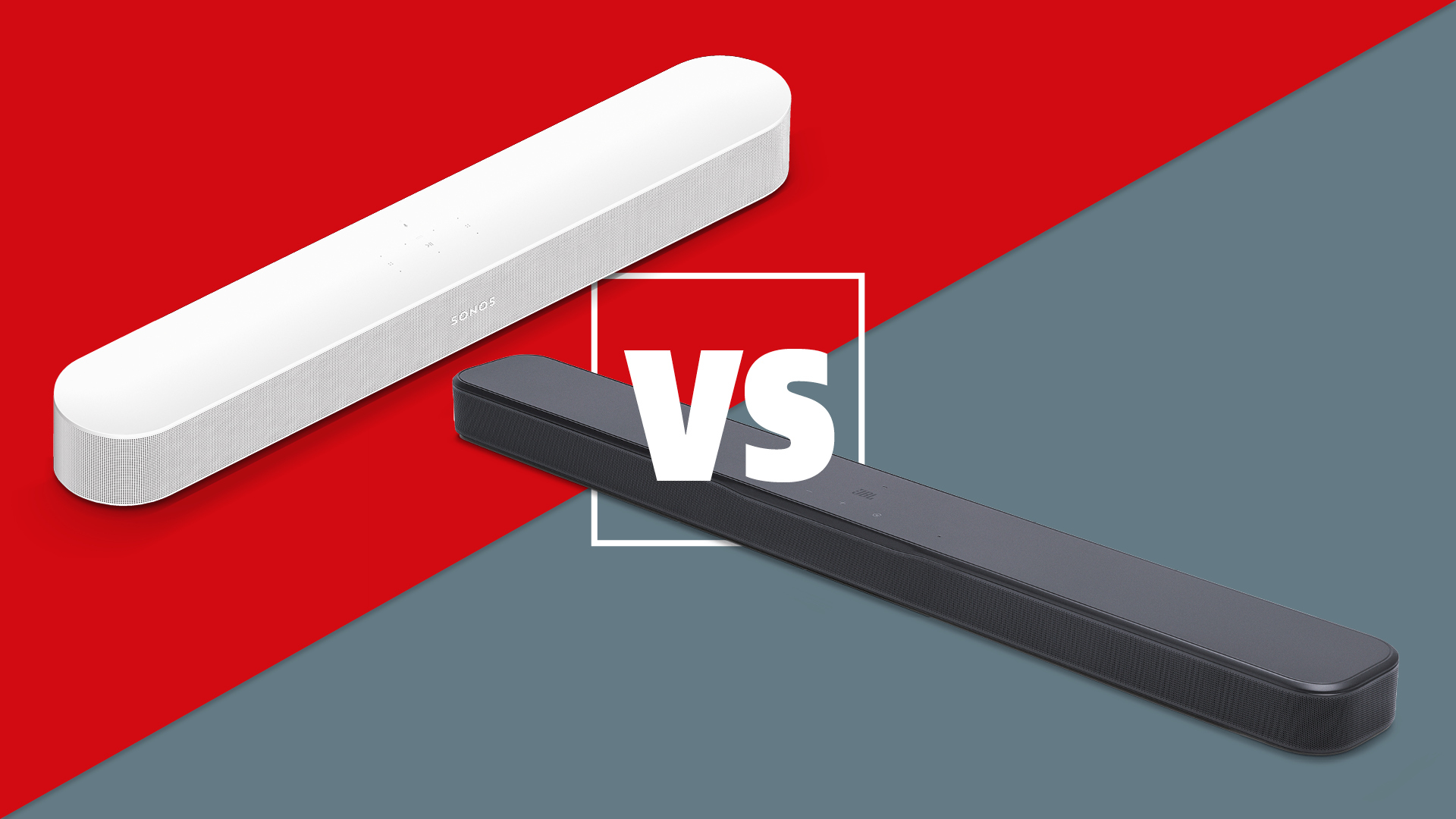Sound+Image Verdict
The Music Hall mmf 1.5 is a turntable with performance and appearance that belies the price ticket big-time.
Pros
- +
Excellent sound for the price
- +
Built-in phono stage
- +
Easy speed adjustment
Cons
- -
Non-adjustable feet
Why you can trust What Hi-Fi?
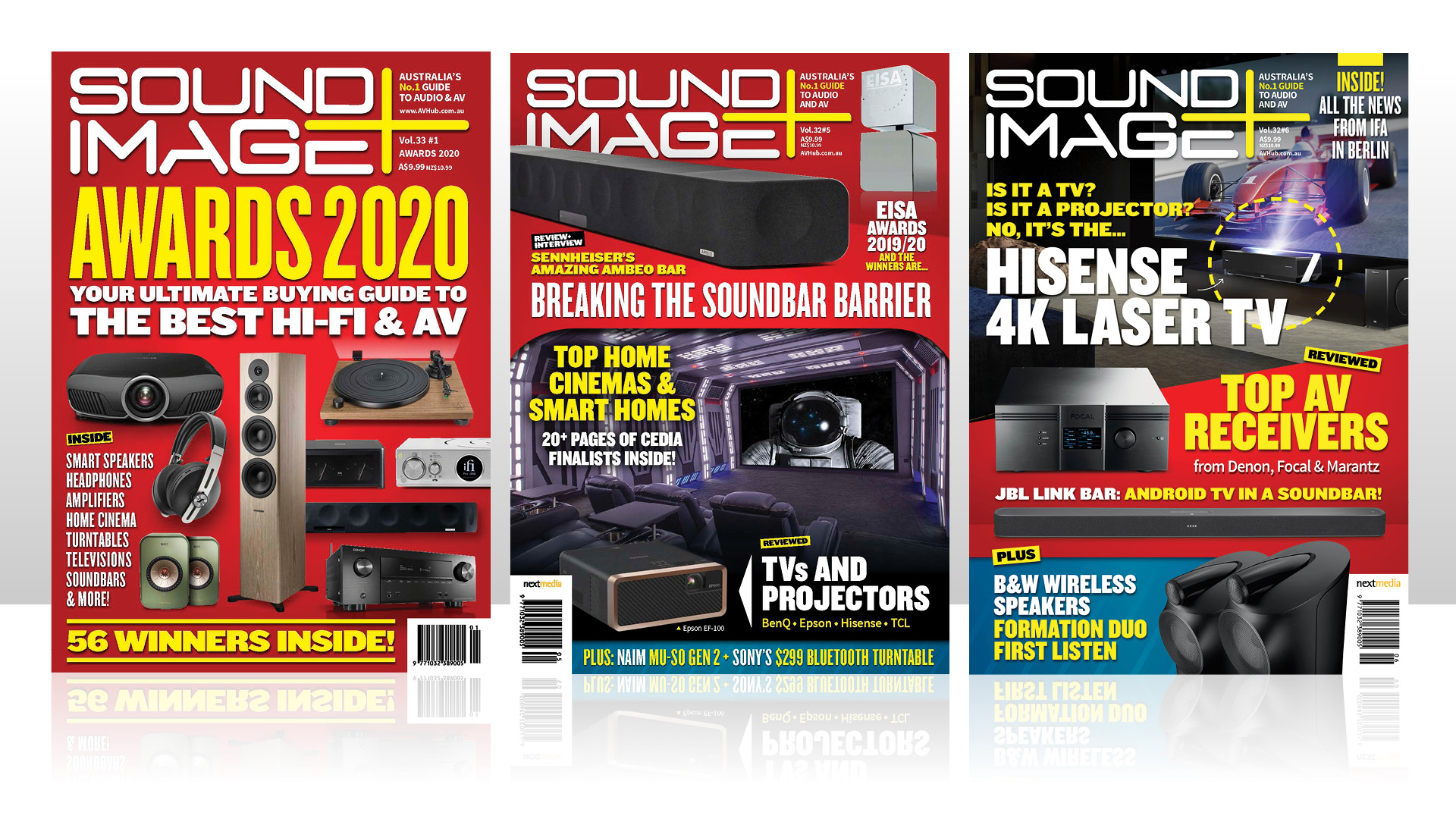
This review originally appeared in Sound+Image magazine, one of What Hi-Fi?’s Australian sister publications. Click here for more information on Sound+Image, including digital editions and details on how you can subscribe.
Music Hall was among the first purveyors of ‘plug’n’play’ turntables of hi-fi quality. Until Roy Hall’s innovation in this regard, the only fully set-up decks available were low-quality boxed record players, while audiophile-grade turntables seemed to deliberately complicate the work required before the buyer could play an LP, almost as an inverse indicator of the turntable’s quality.
So while Music Hall’s mmf-1.5 isn’t exactly a ‘turn-key’ model, because you do have to do some assembly and alignment yourself, it’s pretty straight-forward, and yet it’s a truly hi-fi performer.
Build and facilities
Another Music Hall achievement is that, despite the eminently reasonable price-tag ($399, AU$699 - the Australian price maintained unchanged during the recent distribution change to Indi Imports), the mmf-1.5 doesn’t present as an entry-level turntable.
It has a high-gloss cherry-wood veneered finish, a nicely engineered S-shaped tonearm which has a removable headshell, and a high-quality hinged Perspex dustcover. It even has a high-quality heavy-duty rubber platter mat in place of the flimsy felt ones usually supplied at this end of the market.
The mmf-1.5 is a belt-driven three-speed turntable, its tonearm pre-installed with a ‘Melody’ moving-magnet phono cartridge, and it also has a built-in phono preamplifier, so the mmf-1.5 can be connected directly to the line input of any amplifier.
The Melody is made especially for Music Hall by Audio-Technica, so we have no idea what it costs Music Hall, but Audio-Technica’s most popular low-cost cartridge is its AT-95, which usually retails for around $60/AU$80.
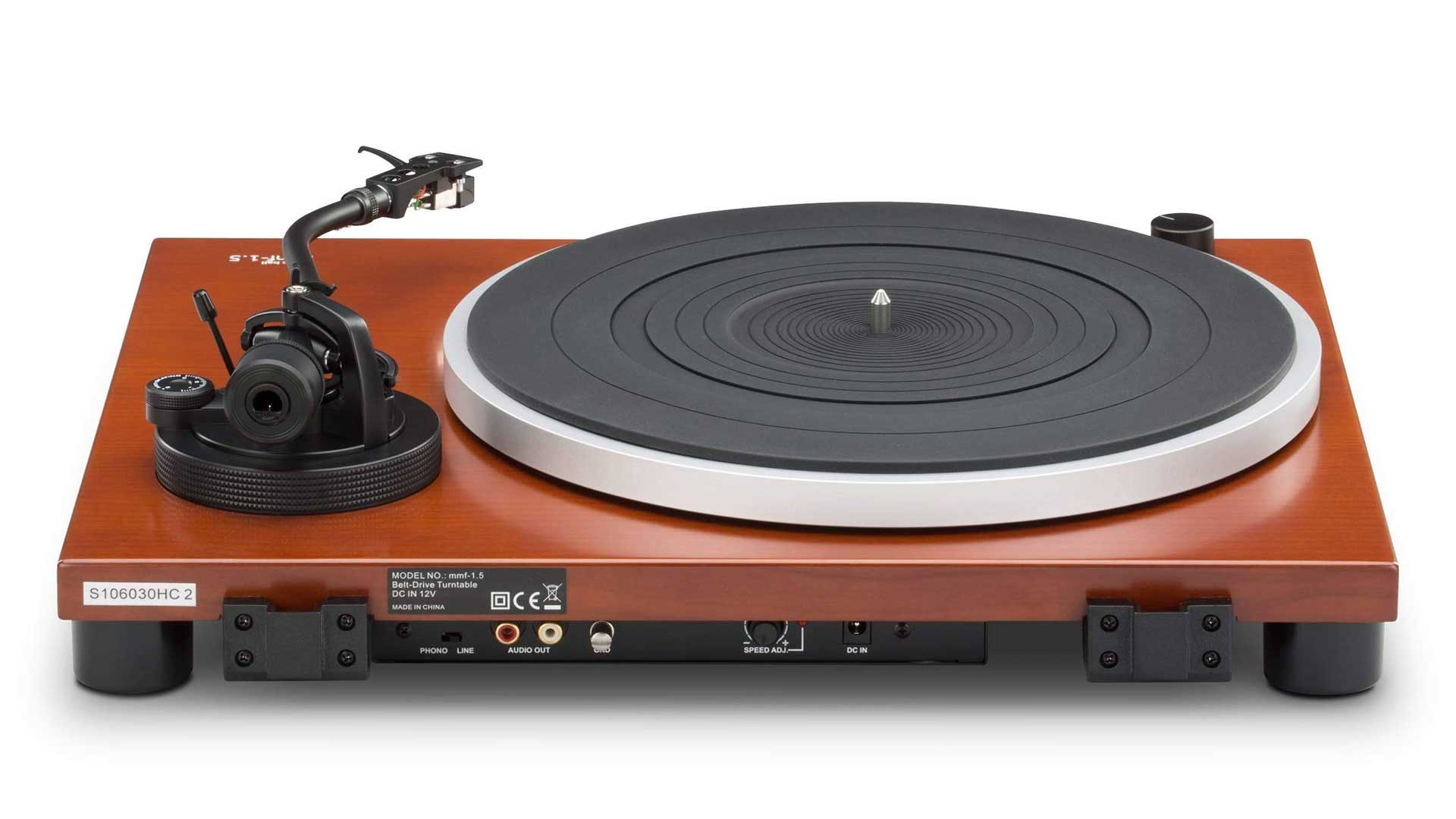
Setting up
The unit comes with the cartridge pre-installed into the headshell – which is supplied separately in the packaging – so all you have to do is push and twist the headshell into the S-shaped tonearm, which looks suspiciously like it came from a Technics SL-1200 turntable (see also the Audio-Technica AT-LP120xUSB).
The latest hi-fi, home cinema and tech news, reviews, buying advice and deals, direct to your inbox.
It turned out, however, that although the Melody cartridge had been pre-installed, it had not been pre-aligned, the calibration being several millimetres in error. We had to move the cartridge mounting bolts to the extreme end of the tracks in the headshell.
Music Hall doesn’t provide any type of cartridge alignment tool in the packaging, which would normally mean loaning one or getting your own, but in this case, because the correct alignment is with the cartridge bolts at the extreme end of the track, you’ll easily be able to align the cartridge correctly without need for a protractor.
You also have to fit the counterweight, and adjust the tracking force to 2 grams, the recommended tracking force for the Melody cartridge, and set the anti-skating dial, which is simply a matter of turning it to the ‘2’ calibration mark.
Dustcover hinges attached and fitted (though not pictured here), and power and motor power cables connected, it’s ready to go.
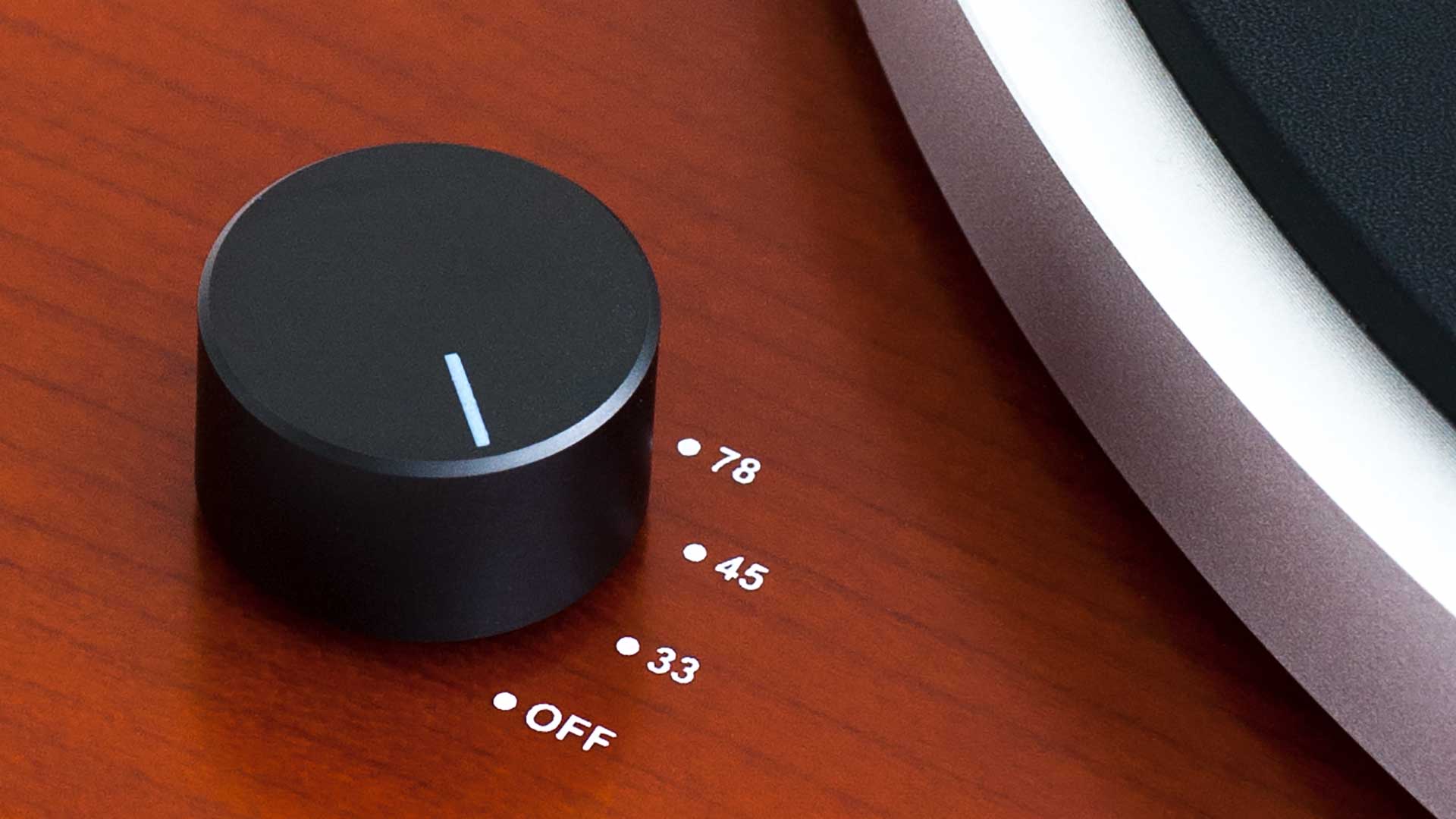
Sound quality
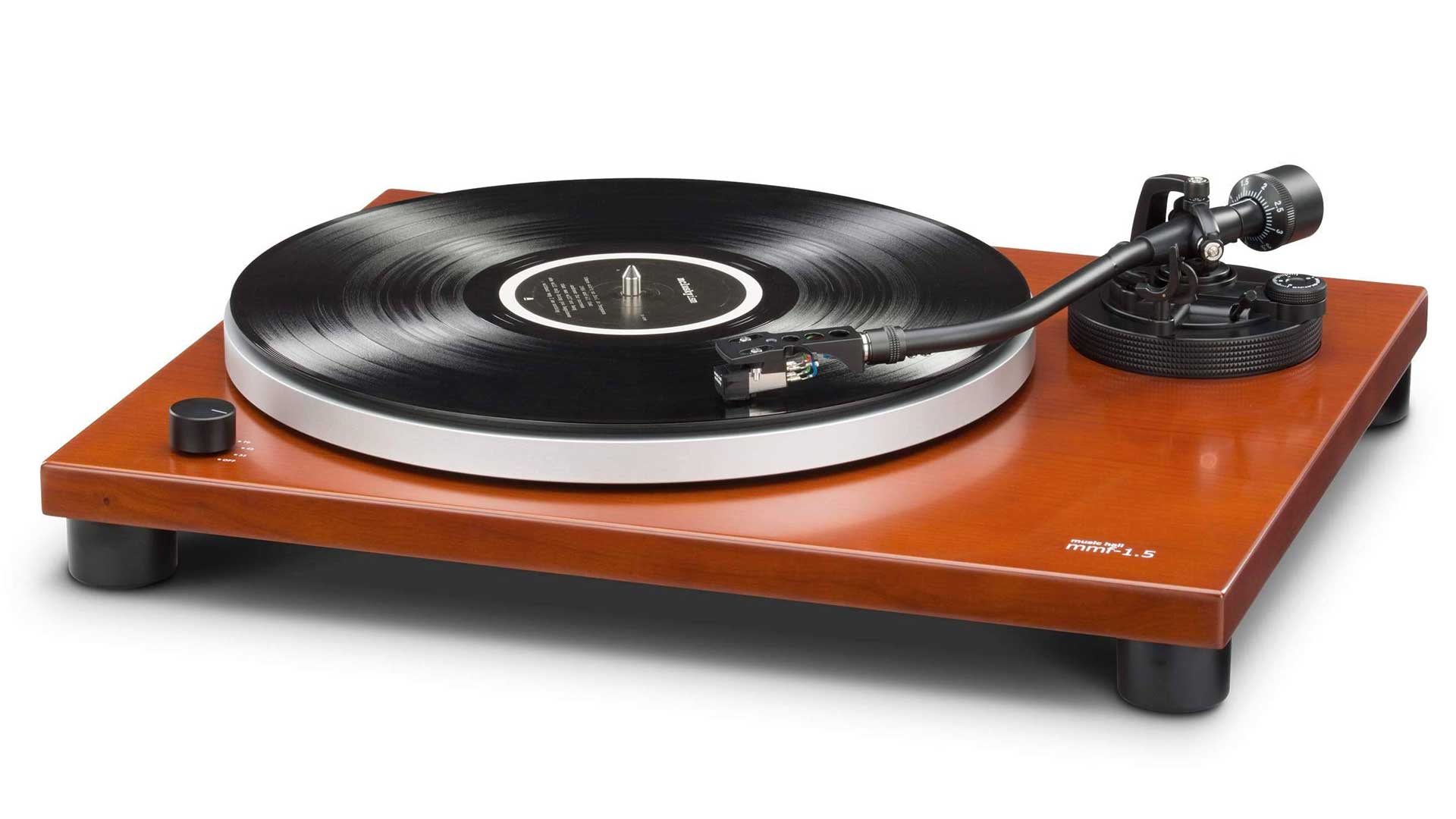
Type: belt-drive, fully manual
Platter: aluminium
Speeds: 33⅓, 45, 78rpm
Outputs: Line-level, phono level
Dimensions (whd): 435 x 127 x 367mm
Weight: 5.4kg
Adjusting the platter speed on the Music Hall mmf-1.5 is very simple, which was just as well, as when we attached a strobe card it seemed in need of adjustment. You simply press and hold the platter speed knob at the rear of the turntable (it’s just alongside the DC input socket) until the red LED alongside it illuminates (about two seconds) then turn the knob clockwise to increase speed or counter clockwise to decrease it.
When the speed is correct, wait until the red LED turns off, which indicates that the motor control unit (MCU) has memorised the setting. You need to do this separately for all three speeds, and then any adjustment you’ve made is retained in memory even if you turn off the turntable or power it down.
We listened first to the raw phono output, bypassing the mmf-1.5’s own phono preamplifier. The Music Hall Melody cartridge is fitted with a conical stylus, rather than an elliptical one, unusual at this level, yet conical styluses are tougher and generally sound better than elliptical styluses when replaying worn or scratched LPs. Also a conical stylus is really the only stylus shape that should be used when playing 78 rpm records, which are much rougher on styluses than ordinary LPs.
But once listening to the Melody, we forgot about what shape its diamond stylus was, because the sound it was delivering was excellent – a really smooth, lovely-sounding cartridge presenting admirable detail, good channel separation and excellent frequency extension in both the bass and treble, though noticeably less so on the innermost tracks of an LP, particularly when there’s material that’s difficult to trace (such as on Emerson Lake and Palmer’s Tarkus LP).
Listening to the lovely-sounding electric piano triplets on Everybody Hurts from REM’s wonderful album Automatic for the People was thoroughly enjoyable, and becomes more powerful and pervasive as the track builds. The Melody reproduced guitarist Peter Buck’s deft finger-picking perfectly clearly, and the cartridge’s bass delivery was more than up to delivering the rhythmic underpinnings of Mike Mills (bass) and Bill Berry (drums) in a tight, forceful manner.
It was also up to delivering the myriad sonic complexities of the album’s two finest tracks, Nightswimming and Find the River. On vinyl, the ‘mood’ of these songs is completely different than when you hear them played from a digital file, even when it’s on a relatively budget spinner like the Music Hall mmf-1.5.
You’ll certainly hear the way vinyl can deliver ‘mood’ better than digital no better than on Leonard Cohen’s Popular Problems. While even the best songs on this album perhaps don’t touch his early masterpieces, the emotional delivery is superb… you hear the suffering behind the lyric, yet at the same time also the redemption waiting just around the corner. ‘Popular Problems’ on vinyl takes you to a place that ‘Popular Problems’ on digital just does not.
Even with the slowest piano music we had available, we could not hear anything in the mmf-1.5’s reproduced sound that could be attributed to either wow or flutter. The pitching was rock-steady and sustained high-frequency sounds were perfectly pure. Neither could we any low-frequency contributions from either the main platter bearing or the drive motor while listening to music. The sound was as clean as a whistle.
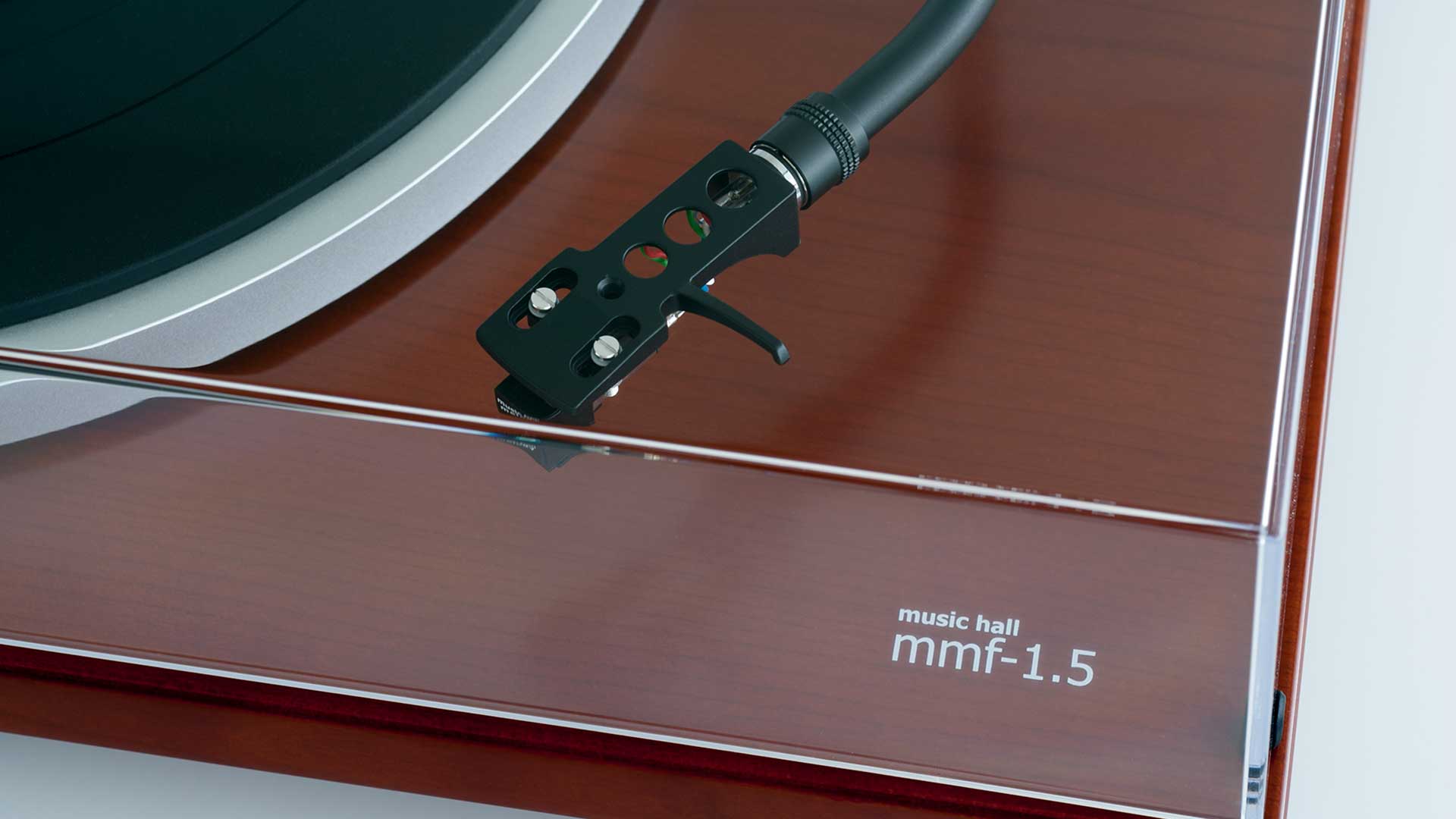
Verdict
The Music Hall mmf 1.5 is a superb turntable at the price whose performance and appearance belies that ticket... big-time. Not only an exceptional performer; it also looks exceptionally good into the bargain.
Sound+Image is Australia's no.1 mag for audio & AV – sister magazine to Australian Hi-Fi and to the UK's What Hi-Fi?, and bestower of the annual Sound+Image Awards, which since 1989 have recognised the year's best hi-fi and home cinema products and installations. While Sound+Image lives here online as part of our group, our true nature is best revealed in the print magazines and digital issues, which curate unique collections of content each issue under the Editorship of Jez Ford, in a celebration of the joys that real hi-fi and high-quality AV can bring. Enjoy essential reviews of the most exciting new gear, features on Australia's best home cinemas, advice on how to find your sound, and our full Buying Guide based on all our current and past award-winners, all wrapped up with the latest news and editorial ponderings. Click here for more information about Sound+Image, including links to buy individual digital editions and details on how best to subscribe.

